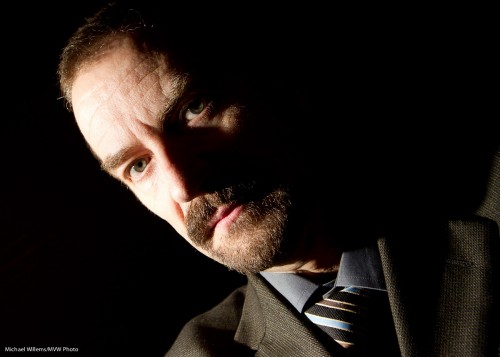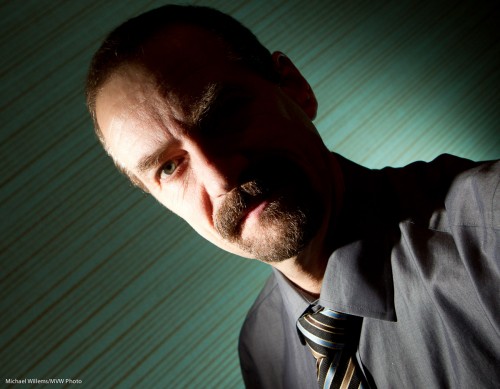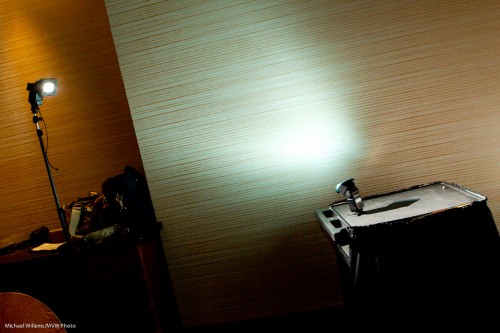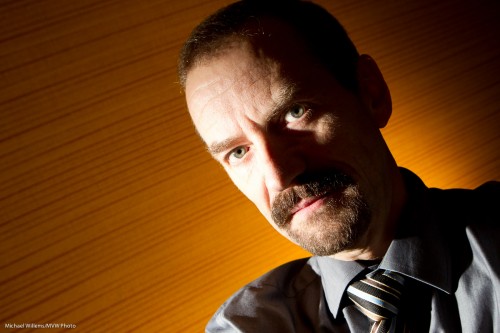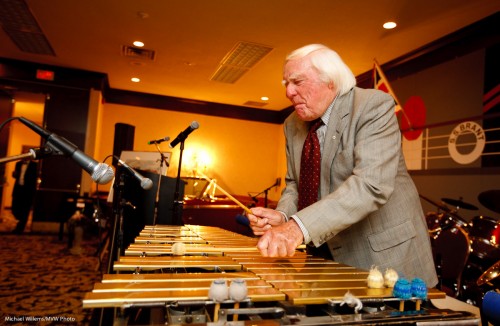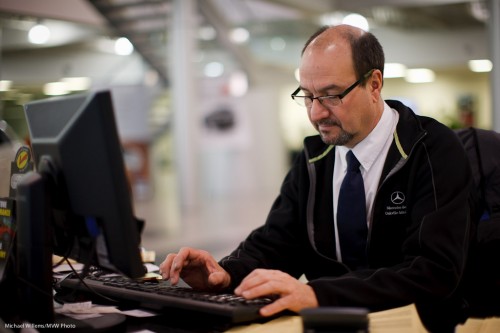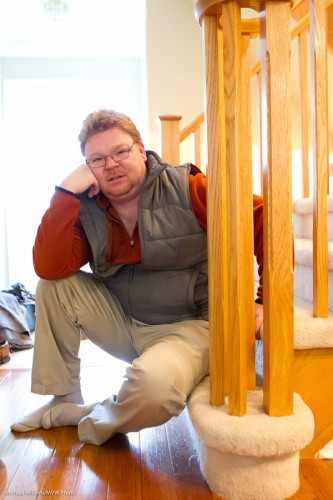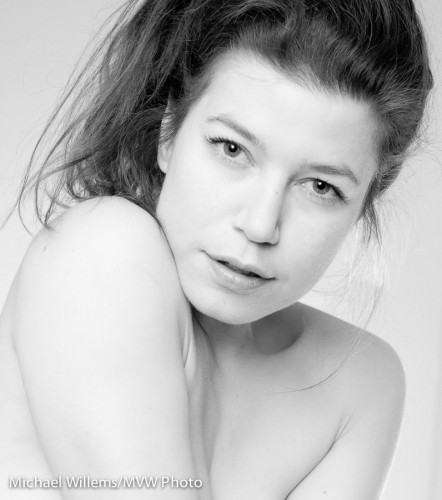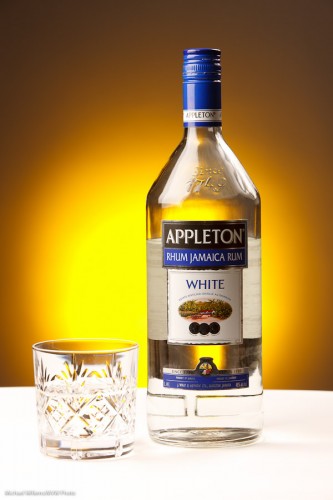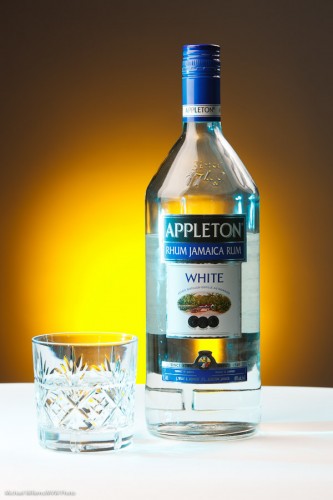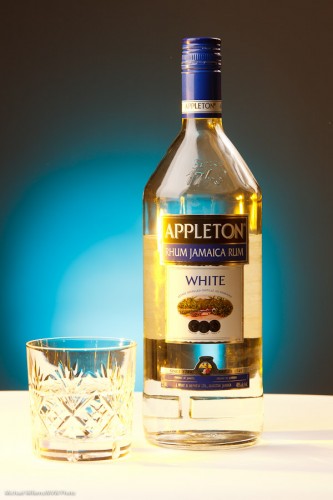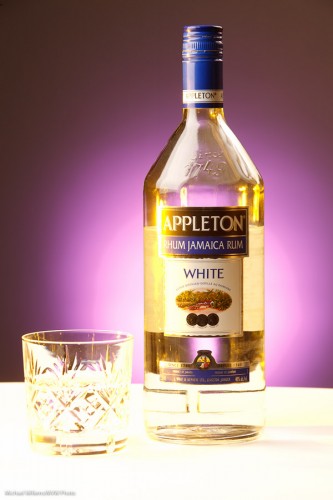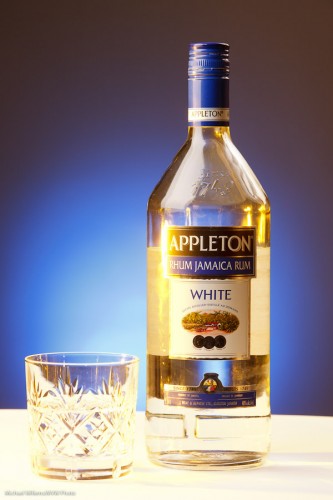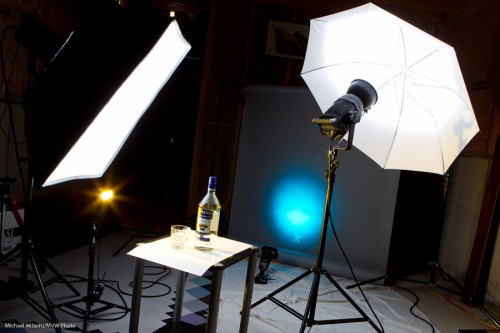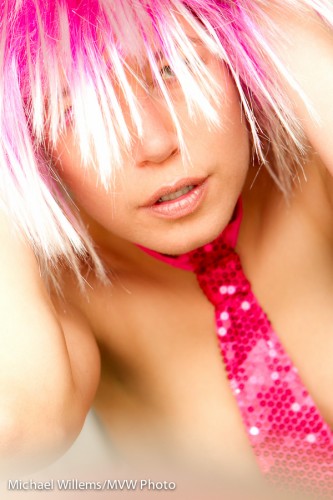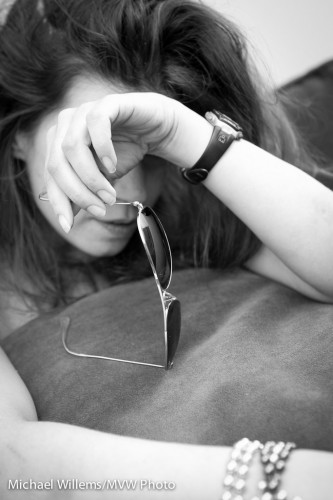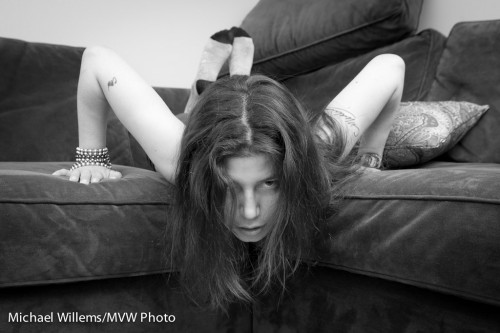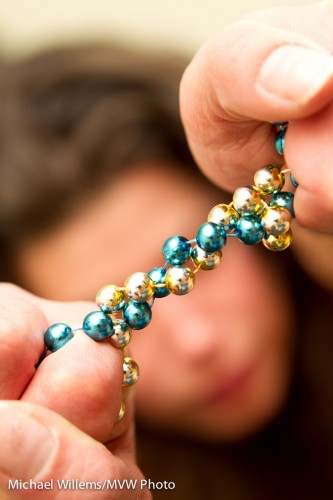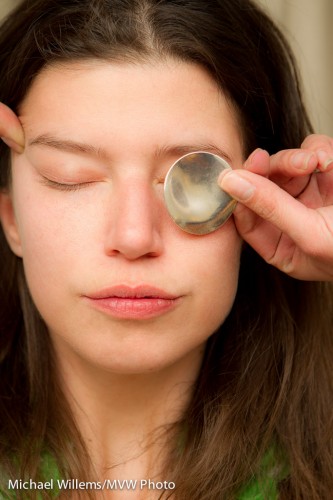Ah.. who does not want their face and skin to look smoother and younger? I thought so.
So here, from a Flash class I taught at the School of Imaging the other day, is a simple example. All of you can do this – simple camera, simple lens, and simple flash, in a small room with white walls and ceilings. To ensure that only flash light shows in your image, set the camera to manual, at 1/25th second, 400 ISO, f/5.6.
First, let’s do it wrong (sorry and apologies to my volunteer): aim the flash straight up at the ceiling. Result: dark circles under the eyes, many wrinkles: ouch. Do not do this at home!
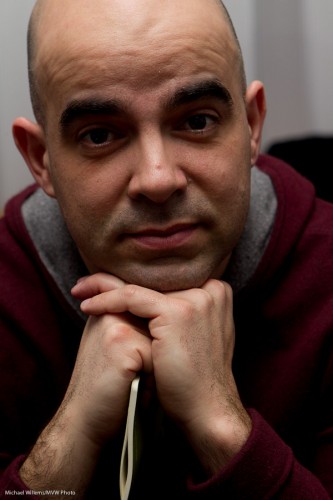
Instead, when close to your subject, aim the flash behind you, up 45 degrees. That gets you a much better image:
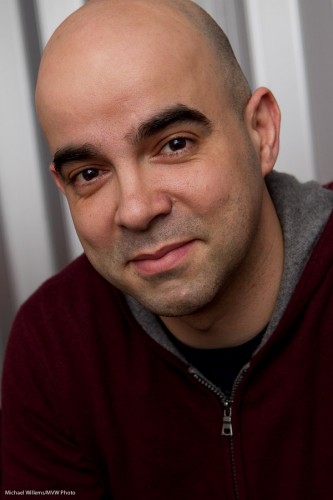
That’s a nice portrait. But now look at this: let’s “overexpose” it by one stop: to do this, set your Flash Exposure Compensation (FEC) to “+1.0”.

Aha, that is better! We have taken years off the subject’s age just by lighting brightly. These images, basically straight out of the camera, show very clearly how you light and expose well: now go try to do it yourself!
Flash rocks, once you know how it works. This post shows just one small sample of what I teach you in my Flash courses and coaching.

